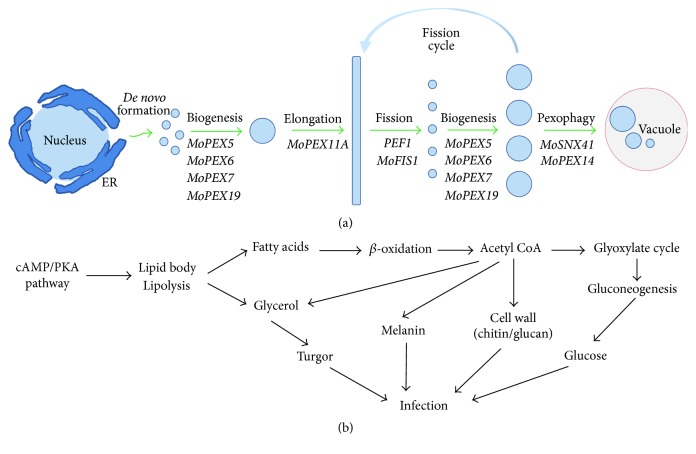Figure 1.
Life cycle and functions of the peroxisomes in M. oryzae. (a) Model of life cycle of the peroxisomes. The peroxisomes are synthesized from the ER and then mature through peroxisome biogenesis process. During the fission inducing condition, the matured peroxisomes can be elongated, and then the daughter peroxisomes can be produced by the fission process, the newly formed peroxisomes will mature through the biogenesis process, and the matured peroxisomes can be elongated again for another fission cycle. When the fission inducing condition is removed, the redundant peroxisomes can be eliminated through pexophagy process. (b) Function of the peroxisomes during fungal infection. When the conidia attach the host surface, the cAMP/PKA signaling pathway is activated, leading to mobilization of the lipid stores by lipolysis, and produces the fatty acids and glycerol. The glycerol will be used to generate turgor. The fatty acids will be taken by the peroxisomes for β-oxidation, which can produce mass of acetyl CoA. Acetyl CoA can be used by the glyoxylate cycle and gluconeogenesis to produce glucose for infection or be used to synthesize melanin and cell wall components. Together with the glycerol generated turgor, these products can help the fungus to penetrate the cuticle and colonize in the host cells.

